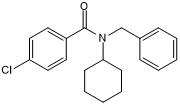RAGE/AGER: Small Molecules and Peptides
RAGE (Receptor for Advanced Glycation End product) is a transmembrane glycoprotein that binds advanced glycation end products (AGEs), beta-amyloid peptides, HMGB1/Amphoterin, and several S100 family proteins. AGEs are adducts formed by the non-enzymatic glycation and oxidation of proteins and lipids. A soluble form can also be generated by MMP-mediated shedding.
RAGE is expressed in the CNS during development as well as in adult endothelial cells, smooth muscle cells, pericytes, monocytes, and neurons. It is locally upregulated in vascular inflammation (e.g. diabetes, atherosclerosis, vascular injury, Alzheimer’s disease). At these sites, RAGE binding to S100A1, EN-RAGE/S100A12, or S100B induces inflammatory immune cell adhesion and infiltration as well as vascular smooth muscle proliferation, neointimal expansion, atherosclerotic plaque development, and transport of A-beta into the cerebrospinal fluid. In cancer, RAGE binding to HMGB1, S100A8, or S100A9 promotes tumor growth and metastasis in addition to inflammatory cell infiltration.
Products:
3 results for "RAGE/AGER Small Molecules and Peptides" in Products
3 results for "RAGE/AGER Small Molecules and Peptides" in Products
RAGE/AGER: Small Molecules and Peptides
RAGE (Receptor for Advanced Glycation End product) is a transmembrane glycoprotein that binds advanced glycation end products (AGEs), beta-amyloid peptides, HMGB1/Amphoterin, and several S100 family proteins. AGEs are adducts formed by the non-enzymatic glycation and oxidation of proteins and lipids. A soluble form can also be generated by MMP-mediated shedding.
RAGE is expressed in the CNS during development as well as in adult endothelial cells, smooth muscle cells, pericytes, monocytes, and neurons. It is locally upregulated in vascular inflammation (e.g. diabetes, atherosclerosis, vascular injury, Alzheimer’s disease). At these sites, RAGE binding to S100A1, EN-RAGE/S100A12, or S100B induces inflammatory immune cell adhesion and infiltration as well as vascular smooth muscle proliferation, neointimal expansion, atherosclerotic plaque development, and transport of A-beta into the cerebrospinal fluid. In cancer, RAGE binding to HMGB1, S100A8, or S100A9 promotes tumor growth and metastasis in addition to inflammatory cell infiltration.
Products:
RAGE antagonist
| Purity: | ≥95% (HPLC) |
ctRAGE-DIAPH1 interaction antagonist; reduces inflammatory signaling in diabetic mice
| Chemical Name: | N-[4-[7-Cyano-4-(4-morpholinylmethyl)-2-quinolinyl]phenyl]acetamide |
| Purity: | ≥98% (HPLC) |
High affinity antagonist of RAGE
| Chemical Name: | 4-Chloro-N-cyclohexyl-N-(phenylmethyl)benzamide |
| Purity: | ≥99% (HPLC) |



